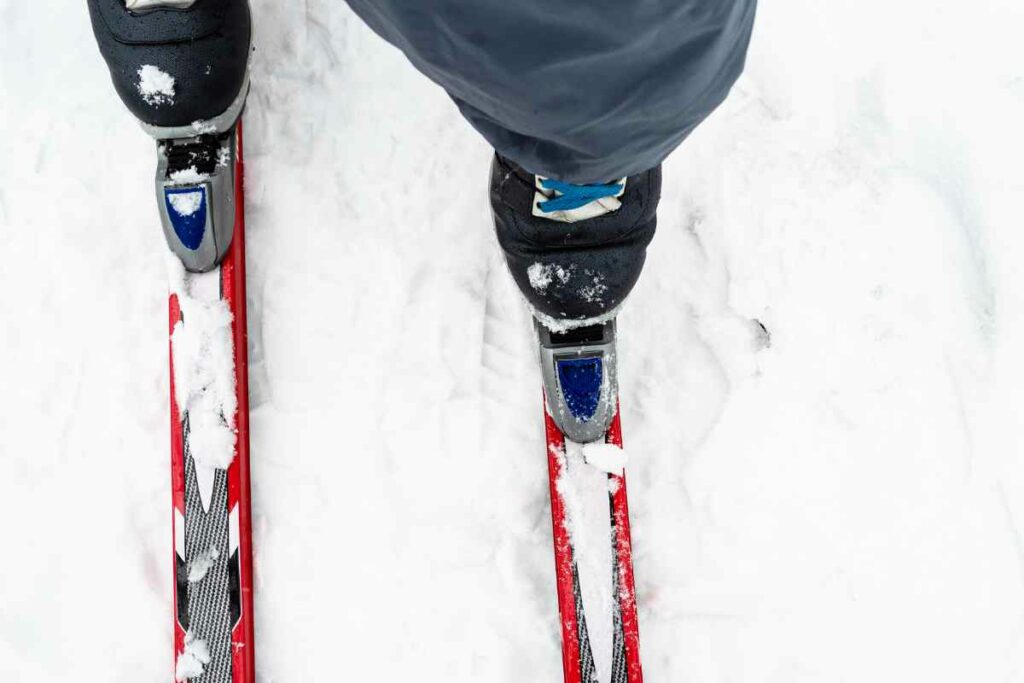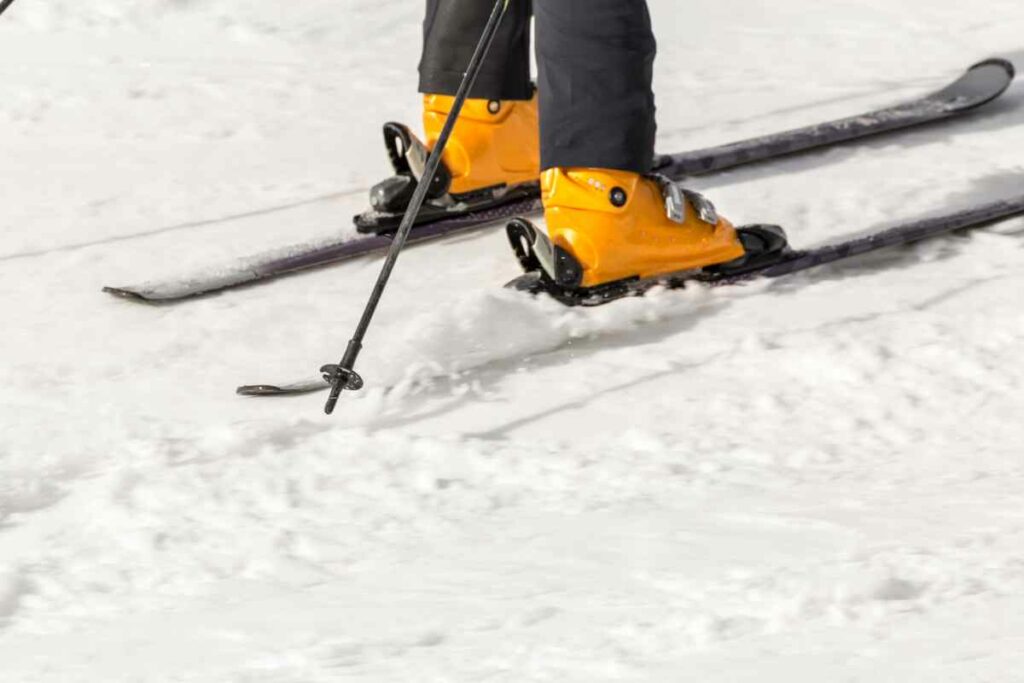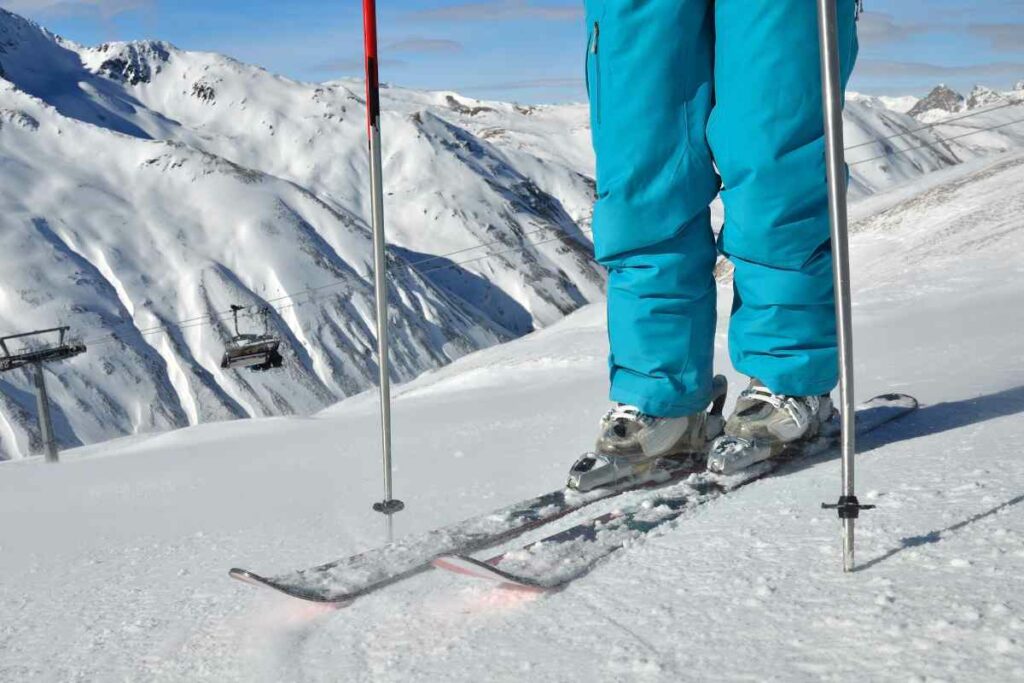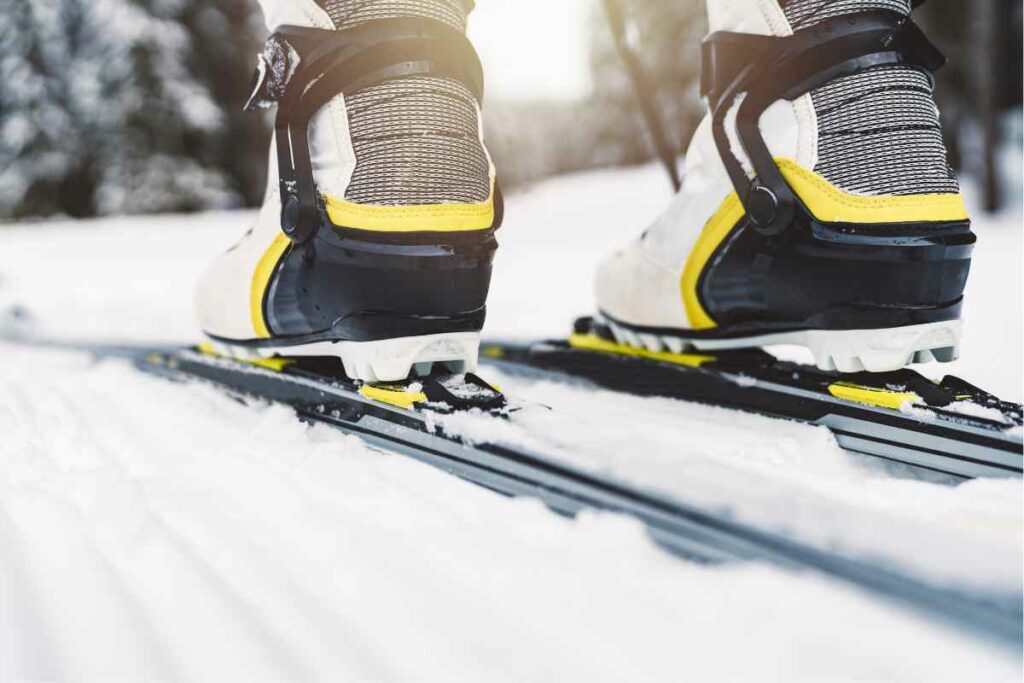Are you going skiing? If so, you should have your ski boots packed and ready.
But with the constant ski equipment upgrades and changes, wondering if your boots and binding work together is typical.
If your alpine boots have grip walk soles, ensuring they are up to date is essential for safety reasons. Here’s gripwalk vs. alpine compatibility explained.
Glossary Of Ski Boots And Bindings

When shopping for ski boots or bindings, you will encounter abbreviations that may be challenging to decipher.
Here is a breakdown of some of the popular terms.
AFD
AFD is an anti-friction device and is vital for all binding compatibility.
It refers to the manufacturing materials that allow for a smooth, straight movement to prevent injury. AFDs are height adjustable, and the bindings work with most boot soles.
ISO
ISO is the abbreviation for International Organization of Standardization.
As a worldwide non-government institution, it represents the international efficiency, safety, and quality of products.
If your ski boot sole has an ISO standard, it has passed all the mandatory material, safety, and compliance tests and checks.
MNC
Multi-Norm Compatible bindings, common in Atomic and Salomon ski boot brands, ensure broad compatibility.
Skiers who prefer to change their boot types go for this standard as it works on Alpine, Gripwalk, and Touring boots.
WTR
Walk to Ride, abbreviated as WTR, is common on older model ski boot soles and binding. Made out of rubber, they are also rockered but are being replaced by Gripwalk.
However, if you have WTR bindings, check to confirm their compatibility with WTR, Alpine, and GW boots. It is because they will not work with non-compliant touring boots.
Rockered Sole
Classic ski boots have a flat sole for easy release and fast movement.
However, current boot models are meant for backcountry ski trips, so they have a curved contour with marked treads.
As a result, one can walk with them safely on all surfaces, whether snowy, icy, or wooden.
An Explanation Of Gripwalk

Gripwalk refers to ski boot bindings and soles first produced in 2016. If you look at your boots, the rubber sole at the bottom is known as Gripwalk.
The company, Marker, makes them so skiers can walk in the snow safely and efficiently.
Although, in the past, these soles were only compatible with the same company’s ski bindings, today, Gripwalk is common in most brands.
Whichever ski boot or bindings you purchase, you will likely find it has Gripwalk technology.
In appearance, unlike older ski boot soles, Gripwalks have a raised front sole area.
They also have a rugged and furrowed rubber profile at the front and back of the shoe. In addition, Gripwalk bindings look different from the traditional Alpine ones.
Newer models have a plate that directly touches the hard front sole.
Does Ski Boot And Binding Compatibility Matter?
Your safety is critical, and having a ski set up where the bindings hold your boots securely is a must.
Whether going downhill or walking to the next slope, you want to protect your knees and legs.
While ski boot and binding compatibility matter, other factors exist.
For instance, binding adjustments, wear from regular use, and care may affect how they let go. As a result, any structural damage to the bindings is a risk of malfunction, which can be dangerous.
The Available Boot Standards

If you want new ski boots and did not buy one with Gripwalk or want to upgrade, options are available. Currently, there are three international standards to consider.
1. Gripwalk Soles ISO 23223
Gripwalk has two alternatives that are suitable for every skier to use. The first one is Gripwalk Boots,which are fitted with stable pads and are compatible with every Gripwalk binding.
The second one is Gripwalk Soles.These soles have a Gripwalk logo and are fitted on other brands of ski boots. They also do well on top of Alpine soles.
2. Alpine Boots ISO 5355
You only need Alpine bindings for a downhill skiing session to lock your boots on the ski, but not for walking uphill.
These classic bindings are standard for most skiing beginners, as they firmly hold the boot.
3. Touring Boots ISO 9523
You can use Touring Boots for both uphill and downhill ski sessions. Their locking mechanism works both ways, enabling walking.
Due to their heel movement, touring bindings are suited for backcountry skiing as they also work as snowshoes.
Also read
Gripwalk Vs. Alpine Compatibility
Since most companies agree on the Gripwalk technology, finding ski/touring boots with Gripwalk soles or ones that can be modified is simple.
As a result, most brands are compatible, such as Salomon, Fischer, Atomic, and Rossignol, among others.
The only difference between Gripwalk and Alpine soles is the shape. However, the toe binding fitting differs, with Gripwalk releasing differently on a classic Alpine binding.
Therefore, if you have a Gripwalk boot, pairing it with Gripwalk Alpine binding will be best.
Below is a chart Gripwalk vs. Alpine compatibility chart.
| Boot Type | Alpine Binding | Gripwalk Binding | MNC Binding | WTR Binding |
|---|---|---|---|---|
| Gripwalk ISO 23223 | No | Yes | Yes | Yes |
| Alpine ISO 5355 | Yes | Yes | Yes | Yes |
| Touring ISO 9523 | No | Yes | Yes | No |
| WTR Boots | No | No | Yes | Yes |
Benefits Of Gripwalk
Gripwalk soles and bindings are the best to walk in. They will hold firm against that slippery stairway or path to the car.
Whether the path is sloppy or smooth, the soft rubber surface and raised front will have you walking normally. It is similar to having street shoes on, although they are slightly larger.
Moreover, the binding release works perfectly, and your performance in ski sports will be excellent as they boost your power.
Furthermore, if you do not have boots with Gripwalk soles, the bindings are compatible with Alpine ISO 5355 soles. You will not need to adjust the height, and the pads are easy to replace.
Are There Disadvantages Of Gripwalk?
There are no cons of Gripwalk on record so far. Skiers say they are the best combination of traditional alpine and touring shoes.
Thanks to the Gripwalk bindings’ compatibility with the boot soles, your downhill ski session will be safe and fast.

Frequently Asked Questions
Will Alpine boots fit Gripwalk bindings?
Yes, they will. But only if they meet the ISO 5355 alpine standard. Look out for the logo if you also want to check if your shoes are Gripwalk compatible.
Can I use Gripwalk boots with regular binding?
While your shoe may fit, Gripwalk technology and structure differ slightly from regular bindings. In this case, the release will not be as efficient, risking damage to the boot.
Are Gripwalk soles worth it?
It all depends on your comfort level when walking on the icy terrain. Moreover, GW soles are the safest option for anyone not steady enough on the snow.
Can I convert my boots to Gripwalk?
You can easily use Gripwalk bindings on most standard ski boots. Although you may face some limitations, a ski gear expert will make the necessary adjustments.
Conclusion
We hope the Gripwalk vs. Alpine compatibility explained above makes your ski trip worry-free and fun. We recommend regular ski boot checks since caution is essential to all physical activities.
Also, whenever you want to hit the slopes, have qualified ski shop personnel mount your boots and bindings to the skis.
They will make any necessary adjustments and test the release before you go out.
- Hidden Gems vs Tourist Spots: Saving Pounds on Your Next Vacation
- Master the Art of Travel Thrifting: Tips from the Pros
- Travel Like a Spy: Secret Skills for Safe Adventuring
- The Hidden Tourist Traps: 5 Costly Scams to Avoid Abroad
- Luxury vs. Budget Travel: Uncover Odd Similarities
- The World’s Most Scenic Airport Landings








